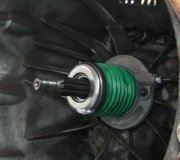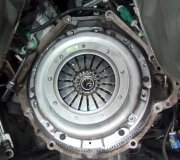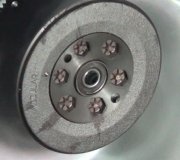When you are bleeding a master cylinder it can be very tough to get fluid going.
You need to do what is called, "Bench Bleeding". Get a short hard brake line from Auto Zone or a parts store. It should be the same fitting as the master cylinder which is 1/8 or 3/8" NPT. The pipe should be long enough that you can cut off one end and attach the other to the master cylinder outlet and then curl it around until it is as close to the intake in the reserviour as possible. You want to keep the fluid level above the end of this pipe during this procedure.
It is best to get an assitant. Start rapidly moving the pedal back and forth with your hand and have your assistant see if bubbles come out of the intake in the resrviour. This means the master cylinder still has air.
Keep doing this until the air bubbles stop and then re=connect the system fitting.
Get some see through hose from Home Depot or a hardware store that will fit snuggly over the bleed nipple. Get enough so you can put it on the nipple then route it to a point where you can hang it higher than the slave cylinder. Then run the hose into a catch can or bottle.
Put your wrench on the nipple and then your put on your hose. Make sure the fluid level in the reserviour never gets down to the intake hole or you will be sucking air into the system.
Rapidly pump the clutch pedal and hold it to the floor and release the bleed nipple by loosening the wrench and then tighten it before you let the clutch pedal up. Another trick is to put axle grease around the threads of the bleed nipple to keep air from getting in.
Repeat this procedure. It takes alot to get fluid going in a new system. Hopefully the bench bleed will start pushing fluid.
The other trick is rapidly moving the pedal up and down as that will help get the fluid moving. Eventually you will get fluid in the hose. When you no longer see bubbles in the hose, the system should be bled.
Saturday, July 7th, 2012 AT 1:03 AM


